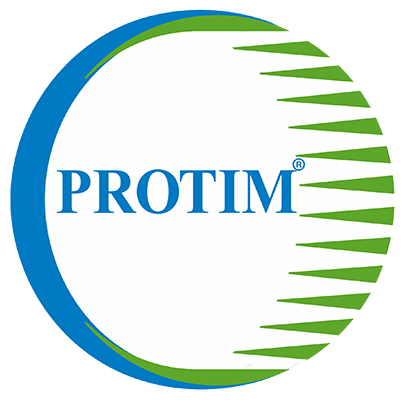Our Products


What is PROTIM®?
PROTIM® is the trade name for a preservation system for timber that is used in construction and joinery applications. Timber that requires protection with minimal dimension change during the treatment process such as roof timbers, timber framing, internal and external joinery that are above dpc/ground level that requires protection to Use Class (UC) UC1,UC2, UC3. When using PROTIM® treated timber in external applications (UC3b) it will need to be coated with a suitable external coating which will need to be maintained whilst in service.
Is PROTIM® treated timber code approved?
PROTIM® treated timber, meets all major building code requirements. Installation must comply with the requirements of all applicable local and national building codes.
How are PROTIM® preservatives applied?
PROTIM® preservatives are applied in factory controlled applications to ensure suitable preservative retentions and protection.
Can Fixings and Fasteners be used with PROTIM® treated timber?
Yes, use fixings, hardware or any metal products as recommended by their manufacturer.
What are retentions or retention levels?
Retention levels refer to the amount of preservative retained in the timber following the treatment process. Retention levels can be different based on the timber preservative system used to pressure treat the timber product and its intended end use or use class (UC) (UC4 = ground contact), (UC1 – UC3 = above ground contact). It is important to purchase treated timber products for the intended exposure condition. Typically, timber products are treated for “above ground use” and “ground contact/fresh water immersion use.
Is maintenance required on pressure treated timber projects?
Pressure treated timber products help protect timber from fungal decay and termite attack. However, moisture, sun, and outdoor conditions may cause the timber project to show signs of weathering. Regular maintenance will minimize these signs of natural weathering.
Natural weathering such as raised grain, splitting, checking, twisting, warping, shrinkage, or swelling occurs in timber treated or untreated. To help reduce the effects of natural weathering, the use of a clear water repellent coating or a semi-transparent water repellent coating product is recommended.
If you desire to apply a paint, stain, clear water repellent or other finish to your preservative treated timber, we recommend following the manufacturer’s instructions and label of the finishing product. Before you start, we recommend you apply the finishing product to a small exposed test area before completing the entire project to ensure it provides the intended result before proceeding.
Can I paint pressure treated timber?
Yes. If you desire to apply a paint, stain, clear water repellent or other finish to your preservative treated timber, we recommend following the manufacturer’s instructions and label of the finishing product.
Before you start, we recommend you apply the finishing product to a small exposed test area before completing the entire project to ensure it provides the intended result before proceeding.
How does mould affect pressure treated timber?
Mould occurring on pressure treated timber products is typically not an indication of fungal decay attack.
Mould growth can and does occur on the surface of many products, including untreated and treated timber, during prolonged surface exposure to excessive moisture conditions.
To remove mould from the treated timber surface, timber should be allowed to dry. Typically, mild soap and water can be used to remove remaining surface mould.
Can pre-treated timber be used in areas where bats are present?
We advise you to visit the Natural England website. www.naturalengland.org.uk.